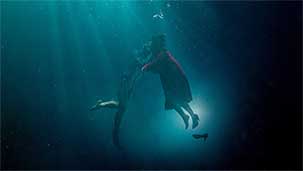It’s sometimes easy to forget that a movie is a collection of still images. Hundreds of thousands of still images in fact. Each one following the last, each one helping to construct pictures in the audience’s head second by second, minute by minute. Each image incrementally pushing the story forward. Each one serving an important purpose as they spool out at the rate of twenty four per second.
But some are more important than others.
As a still photographer, you understand better than most the power a single image can hold. And you work hard to find them.
You spend your days (and nights) on set, searching for discrete images, negotiating the various demands the production makes upon you: a poster image perhaps, certainly galleries, character portraits, production stills used for print or online magazines, publicity, reference for costumes and continuity as well as any photographic material that actual appears on camera.
All of this you have to produce while remaining a ghost on set. An integral part of the production, yet in some ways outside of it—finding your solitary place in a morass of lighting techs, AD’s, camera people, and all the other folks that populate a film set. Remaining invisible to actors who have no problem with a boom mic almost grazing their forehead, but can get spooked just by someone holding a still camera anywhere near their line of sight.
On some films, like the deliberately low key and decidedly unflashy Spotlight, it must be a challenge to find those arresting, iconic, images. After all, how many different ways can you photograph four or five people sitting in a small room, talking to one another?
On others, like director Guillermo del Toro’s The Shape Of Water, I imagine the opposite to be true. Everywhere your camera looks there must be something interesting to see and record. The challenge isn’t a poverty of choice, it’s about excess. Although that strikes me as a good problem to have.
Del Toro’s films have a particular visual quality to them. More than most, they feel like paintings in motion. Each frame is lovingly composed and meticulously filled with detail that is purposeful—there is no drop of water or link of chain, no sliver of light or pooling shadow, that isn’t exactly where it was intended to be. But his films are never sterile. On the contrary, that detail contributes to an atmosphere filled with both promise and dread, even when the characters inhabiting it sometimes seem blind to its charms, or dangers.
And The Shape Of Water is filled with dangers, both real and imagined, and the monsters are never exactly whom you might think. This is an extraordinary film—a poetic slice of magic realist cinema that pushes and pulls at all kinds of different strings. It is a romance in the very old sense of the word, part Grimm’s fairy tale, part James Whale and German expressionism, all of it unique in the way del Toro binds it together.
The Shape of Water is about awakenings—people are spun out of their orbits and sent careening into one another by the arrival of a creature at a Government research facility located somewhere in an alternate mid-western 1966 America. It is a place filled with finned, teal Cadillacs and huge concrete bunkers busy with exotic mysteries. Women cook and clean and men pontificate. The Russians are a different kind of threat than today, but they lurk around every corner. And then there’s a monster, or a god, or just a stranger in a strange land, bound in chains and tormented in the name of science.
The people who fill these discrete frames are equally byzantine and exotic, even if they, at first blush, seem anything but. Sally Hawkins, Michael Shannon, Octavia Spencer, Richard Jenkins — that right there is an impressive who’s who of character actors. But they are leads here, and it is gleefully subversive how much del Toro delights in twisting the usual conventions about who these people are and the passions they can barely conceal.
The centre that holds all of this together is a simple but deeply affecting story about the transformative power of compassion and love, a weird (in the 30’s pulp fiction sense of that word) romance that sees the most quiet among us risk everything for someone, or something, far from human.
All of this is framed by del Toro in a way that makes the mundane seem a thin veneer which both horror and beauty are constantly trying to claw through. A world of grey and shadow constantly being breached by shards of light.
And you can see that in the frames that illustrate this review. Single images that manage to connect these two opposing aesthetics, to give us all a taste of what might be in store for us, when the lights fade, and the images start to flow, one after another, up on the screen.
Just you, doing your job.
Sincerely,

Tim







